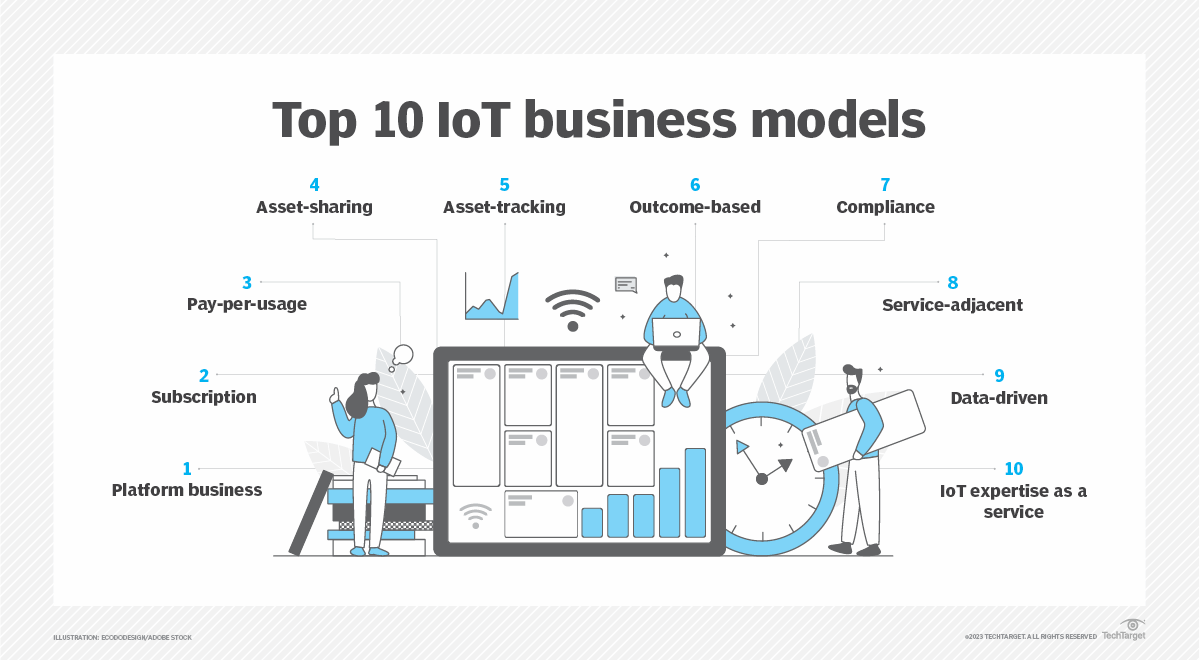Top 10 IoT business models for 2024

IoT (Internet of Things) technology is rapidly evolving and becoming essential for businesses across various industries. With IoT, companies can quickly create and develop new business models at scale, driving digital transformation in nearly every sector. One of the advantages of IoT business models is their ability to deliver value efficiently and sustainably to customers. A well-designed IoT business model supports business continuity in an innovative way. The potential of IoT is only limited by the creativity and willingness of companies to explore new possibilities.
Several popular IoT business models encompass innovative approaches that focus on leveraging connected devices and data. The platform model, for example, connects producers and consumers to generate revenue from related transactions, as seen with Amazon’s Alexa. The subscription model helps businesses establish long-term relationships with customers. Meanwhile, the pay-per-use model, used by auto insurance companies, provides flexibility by charging based on usage. Additionally, asset-sharing and asset-tracking models allow businesses to optimize equipment and logistics. IoT is also applied in outcome-based, compliance, data-driven, service-adjacent models, and IoT as a service, all aimed at improving business efficiency and delivering added value to customers.
Here are 10 key points in applying IoT business models:
- Platform model: Connects producers and consumers in a digital ecosystem.
- Subscription model: Generates recurring revenue by offering continuous services.
- Pay-per-use model: Charges based on the actual usage of products or services.
- Asset-sharing model: Reduces costs by sharing equipment or resources among companies.
- Asset-tracking model: Monitors assets and supply chains in real-time for efficiency.
- Outcome-based model: Focuses on the results customers desire, rather than physical products.
- Compliance model: Utilizes IoT to ensure compliance with industry regulations and standards.
- Data-driven model: Collects and sells data generated by IoT devices.
- Service-adjacent model: Provides additional services that support the use of IoT devices.
- IoT as a service: Offers IoT expertise as a service to help companies with implementation and management.
Source: https://www.techtarget.com/iotagenda/tip/Top-9-IoT-business-models